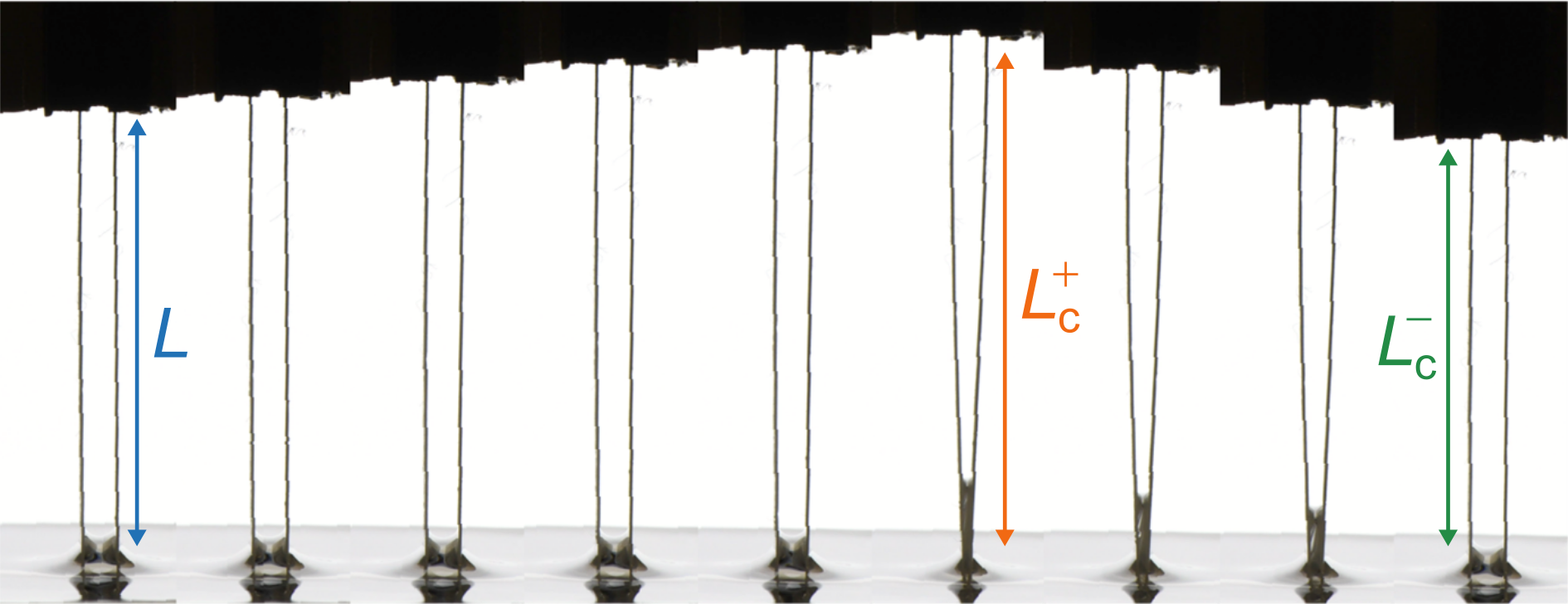Fabian Brau (ULB) - Fluid-structure interaction: Oscillation and coalescence of slender structures
Many bees possess a tongue resembling a brush composed of a central rod (glossa) covered by elongated papillae, which is dipped periodically into nectar to collect this primary source of energy. During the dipping process, the papillae, which initially adhere to the glossa, unfold when immersed in the nectar. This fluid capture process involves thus the relaxation of bent rods (papillae) in a viscous fluid while the tongue is immersed and the coalescence of rods when the tongue is withdrawn from the bath. We present results of two recent studies of these physical processes summarized below.

The relaxation dynamics of a bent rod immersed in a fluid is studied experimentally for various rod materials and sizes and fluid viscosities. One extremity of the rod is clamped while its free end is displaced from its equilibrium position by a controlled distance. For large bending stiffness or low viscosity, the dynamics is underdamped, and the rod oscillates around its equilibrium position with a well-defined frequency and a damped amplitude. In contrast, for low bending stiffness or large viscosity, the dynamics is overdamped, and the rod relaxes to its equilibrium position without oscillating. We show the existence of two overdamped regimes where the relaxation dynamics is characterized by two different polynomial decays showing that the viscous force is not proportional to the rod velocity. The system is modeled using the dynamical beam equation supplemented by the viscous force experienced by a rigid cylinder moving at a constant speed in a fluid. Despite this approximation, the model describes the dynamics in good approximation and provides a simple explanation for the existence of two overdamped regimes which originate from a change of the viscous force behavior as the Reynolds number varies.
We study the onset of coalescence between two slender structures quasi-statically withdrawn from a liquid bath. When partially immersed, they interact with each other through the capillary force induced by their menisci. As they are removed from the bath, their dry length increases, and they become easier to bend until the capillary force is strong enough to trigger contact. Surprisingly, the structures snap to contact from a finite distance at a critical dry length. The transition to coalescence is thus subcritical and exhibits a large hysteresis loop between two stable states. An analytical coalescence criterion is derived and agrees well with experimental data for rods and lamellae.

A pair of lamellae snaps to contact as they are removed from a liquid bath when the dry length and separate when featuring a hysteresis loop
Toutes les Dates
- 21/04/2022 11:30





